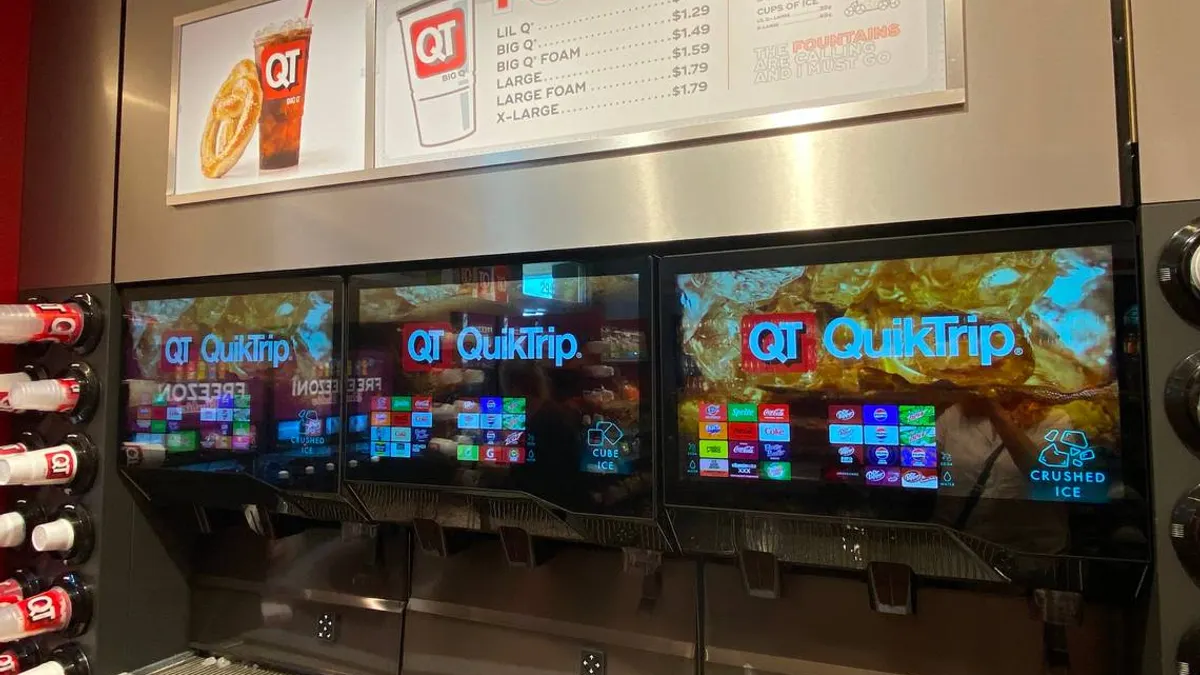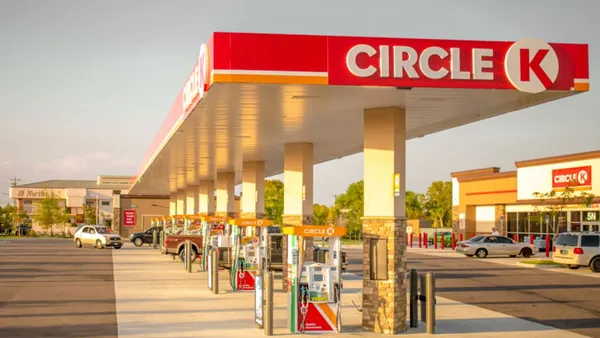While nonalcoholic beers and other beverages currently represent a small portion of U.S. beverage sales, the category is a fast-growing profit center that c-stores need to take advantage of — but shouldn’t over-invest in.
Sales of nonalcoholic beer in c-stores spiked 27.6% to $7.7 million for the quarter ending Feb. 26, according to Chicago-based research firm Circana (formerly IRI and NPD Group), and had healthy growth of 13.4% to $35 million for the 52 weeks ending Feb. 26.
Across all multi-outlet retailers, nonalcoholic beers soared 29.2% for the quarter and 20.5% for the year, amounting to $255 million in sales for the year ending Feb. 26, per Circana. Grocery and mass retailers, such as Walmart, are slightly over-indexing c-store growth for nonalcoholic beers, while drug stores and club stores are under-indexing, said Mike Wyatt, client insights consultant for Circana.
“Although not exactly aligned with overall BevAl trends, c-store has emerged as the small format leader while growth in grocery has stabilized and mass/club fluctuate,” said Wyatt.
Caleb Bryant, associate director of Food and Drink Reports for Mintel, echoed that sentiment in the research firm’s Alcohol Alternatives U.S. 2022 report, writing, “Sober curiosity is trending as consumers prioritize their health and wellbeing, prompting many to seek premium, unique, healthful and functional alternatives to alcohol.”
Demand for nonalcoholic canned cocktails is 13% higher than demand for their boozy counterparts among people who want to reduce their alcoholic consumption, according to consumer insights firm Veylinx. People who drink alcohol also are willing to pay more for nonalcoholic canned cocktails than non-drinkers, according to the same report.
Despite rapid sales growth and interest in the category, nonalcoholic beverages account for only 0.1% of total beverage (alcohol included) dollar sales in c-stores, Wyatt said.
“This segment is very, very small,” said Bourcard Nesin, beverage analyst for Rabobank. “Non-alcoholic beer is far more developed than non-alcoholic spirits or wine and it is still less than 1% of total beer volumes in the US.”
With the amount of excitement in the category over the past few years, “you’d hope that annual growth rates would be in the high double digits — 50% plus — but they are far lower,” said Nesin. “They are growing much faster than alcohol brands overall, but given the tiny baseline, I look at the category’s recent growth numbers as fairly disappointing.” He added that he had expected to see more like 75% to 100% growth.
In addition to Americans’ growing desire for healthier beverages and the “sober-curious” consumer, innovative flavors and marketing in the space are boosting interest. However, because the category is so small, experts advise c-stores not to invest heavily in space allotment.

Nonalcoholic beverages tied to health
Sober-curious consumers are reducing their alcohol consumption for a myriad of health reasons, ranging from weight loss to better mental and physical health or improved sleep, reported Mintel. As a result, “better for you” claims play a critical role in the category. Thirty-one percent of consumers said that they were looking for “low-calorie” options when choosing an alcohol alternative and 30% sought “low-sugar.”
“Consumer interest in drinking less for mental health reasons indicates the potential for relaxing/calming [alcohol alternative] beverages that provide consumers relief without the dulling effects of alcohol,” noted Mintel.
Wyatt also noted that nonalcoholic options often provide drinkers with a similar flavor profile. “This value proposition is appealing for those wanting to still partake in the social aspect of drinking without the caloric intake and/or ill effects of non-moderated alcohol consumption,” he said.
Know the target demographics: The sober-curious
The growth in nonalcoholic beverages stems primarily from the “sober-curious” shoppers who want to exchange their alcoholic beverages for non-alcoholic options occasionally.
“While many people assume that nonalcoholic drinks are for people that don’t drink at all, in reality, they are overwhelmingly for people that drink alcohol, but for whatever reason, they decide that for this round, this evening or this month that they don’t want a drink or need a break,” said Nesin.
Mintel reported that this behavior also means that sober-curious consumers aren’t a huge threat to the alcohol industry. “Consumers largely hold positive views toward alcohol and most sober curious consumers are primarily interested in making alcohol an occasional indulgence; very few consumers plan to entirely give up alcohol.”
Innovative flavors and attributes drive sales
Premium packaging, unique flavors and high-quality ingredients are critical in the nonalcoholic beverage space, according to Mintel, reporting that 21% of sober curious consumers say “adult-friendly packaging design” is important when choosing an alcohol alternative product.
Brands’ “diversity in messaging, product attributes, flavors and occasions they serve really are making the category more exciting,” said Nesin. For example, Athletic Brewing boasts a new type of sports and activity-centric branding for the category, along with sponsoring Iron Man competitions and other similar moves, he said. Graphics on the cans are eye-catching and colorful.
Plus, Athletic Brewing brings “exciting, craft-inspired flavors,” such as Trailblazer Hoppy Helles and Mango Picante, to the table. Keurig Dr Pepper invested $50 million in the brand late last year.

Most of the major beer makers provide nonalcoholic lines, often touting unique flavors and packaging. For example, Labatt Blue recently rolled out Labatt Blue Light Non-Al Strawberry Acai boasting 75 calories.
While some alcohol alternatives aim to boost energy and mental alertness, some also contain CBD and other ingredients touted for their relaxation benefits. For example, ready-to-drink seltzer Hiyo, which includes organic ingredients such as ashwagandha, L-theanine, lion’s mane and cordyceps, “gives drinkers everywhere a healthier way to unwind,” the company said in a press release.
The “sparkling social tonic” brand is sold in Chicago-based Foxtrot stores, along with specialty and natural grocery stores, the company told C-Store Dive.
How much space should retailers devote to the category?
While nonalcoholic beverages have gained some traction and are currently outperforming the overall beverage category, “the sales mix is still very low and the full potential remains unknown,” said Wyatt. “Therefore, c-store operators should avoid swinging the pendulum too far in the direction of non-alcoholic beverages and keep devoted shelf space to a minimum, which at this stage should be somewhat commensurate with sales mix.”
So, having a few nonalcoholic offerings on shelf “is certainly a good strategy for appealing to the aforementioned consumer base seeking these items, but there is still a high degree of cannibalization within the non-alcoholic beer segment as opposed to being truly highly incremental,” said Wyatt.
In addition, the typical nonalcoholic beer shoppers are 55 or older, upper income and primarily business professionals. “In contrast, the typical c-store shopper is generally lower income, ages 25 to 34, varying household sizes and primarily laborers,” Wyatt said. “This disconnect between the non-alcoholic beer shopper and the typical c-store shopper further emphasizes why devoting too much shelf space to non-alcoholic beverages in c-stores might not be the optimal merchandising/marketing strategy.”
However, Nesin suggested the opposite approach. “In general, people that care about selling non-alcoholic brands emphasize one thing: achieving a critical mass,” he said. “Retailers need to offer enough non-alcoholic options that it becomes a stand-alone section in the cooler. Shoppers notice those brands better and can more easily compare and shop for the products they want best.”
For example, more than 10% of the beer sold in Spain is nonalcoholic, said Nesin. “In supermarkets and convenience stores across the country, the non-alcoholic section is nearly as big as the alcoholic section of the market. The non-alcoholic beer section is easily two to three times bigger than the craft section.”










